New electric train service to halve JB-KL rail travel time - is it a viable substitute to the HSR?
KTM’s newly appointed acting CEO Ahmad Nizam Mohamed Amin tells CNA that the ETS, which will extend from its existing route to Johor Bahru by end-2025, could “revolutionise” transport options in the peninsula.
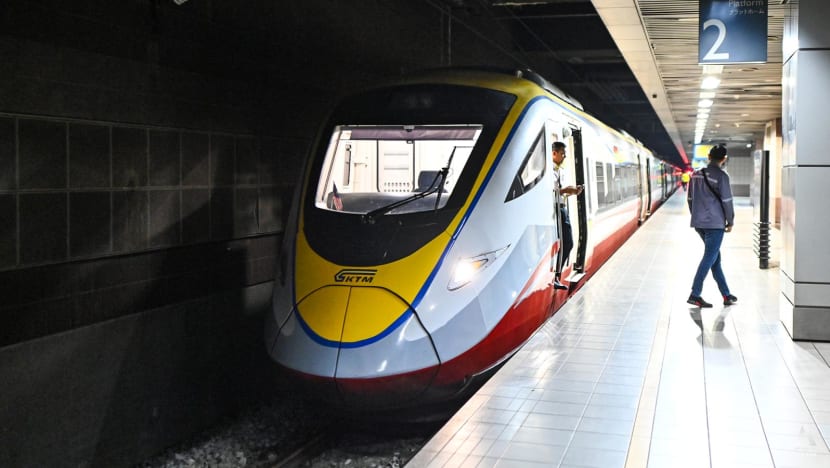
An electric train service (ETS) carriage is seen at KL Sentral station in Kuala Lumpur on Aug 27, 2025. (Photo: CNA/Zamzahuri Abas)

This audio is generated by an AI tool.
SEGAMAT, Johor: From Johor Bahru in southern Malaysia to the capital Kuala Lumpur in 3.5 hours by train? That’s about half the current time on a diesel train and comparable to a road journey via car or tour coach - sans the traffic congestion.
It’s the new travel option available soon, following the projected completion of the country’s electric train service (ETS) by the end of 2025.
Coupled with the expected completion of the Johor Bahru-Singapore Rapid Transit System (RTS) Link by the end of next year, travellers from the city state heading to Kuala Lumpur, and vice versa, can do so within four hours via rail.
All a traveller from Singapore needs to do is head to the Woodlands North RTS station to clear immigration on both sides before taking a five-minute ride across the Johor Strait.
Once at Bukit Chagar RTS station, the traveller can walk for less than five minutes to JB Sentral along a sheltered travellator, where they can then board the ETS to KL Sentral.
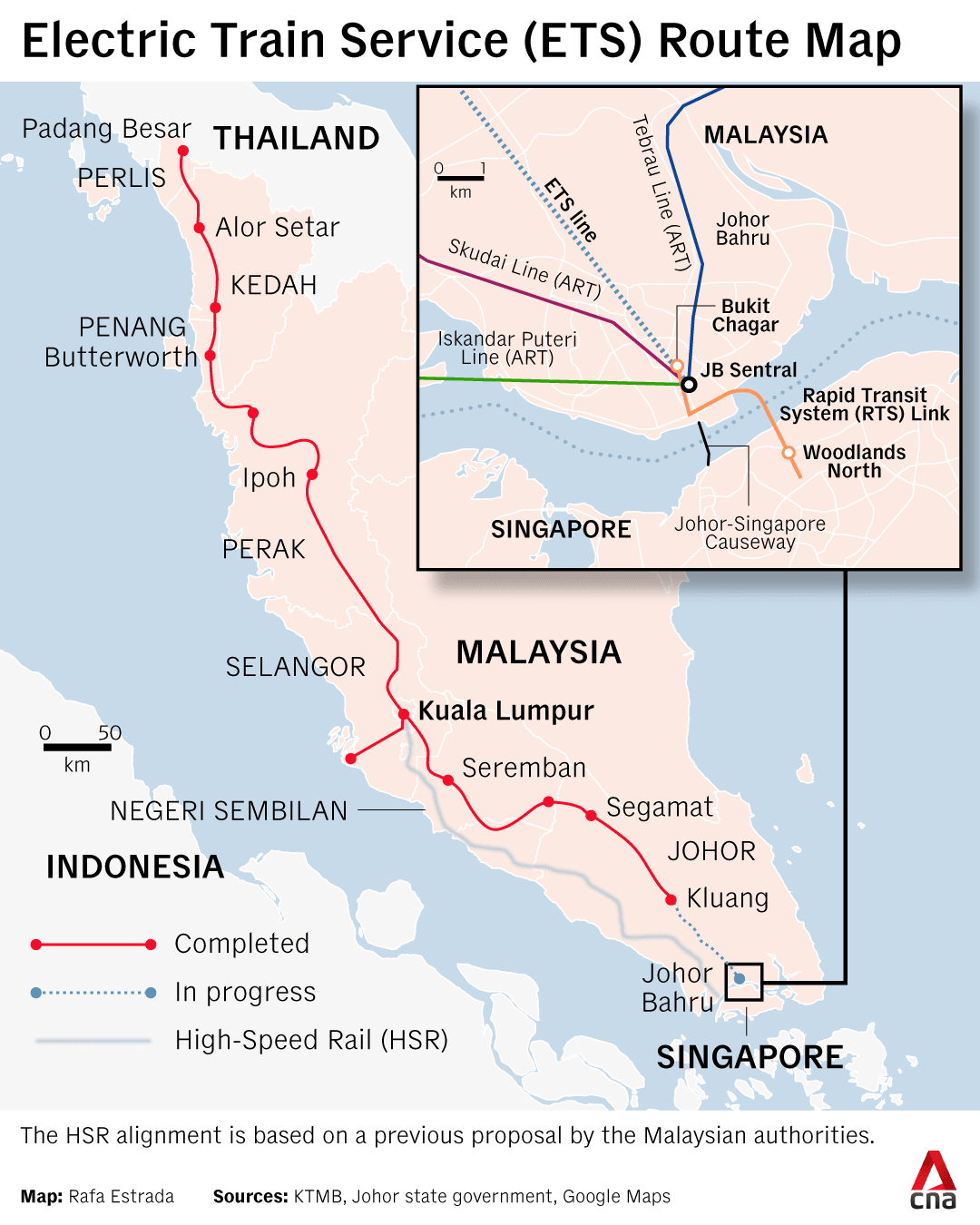
This shortened transport option has inched closer to reality with the latest developments to the ETS: On Aug 23, its latest extension at Kluang was launched in a lavish opening ceremony officiated by Malaysia’s king Sultan Ibrahim Sultan Iskandar, who is also Johor’s ruler.
The rail service connects the town in central Johor with key cities like Kuala Lumpur, Ipoh, Butterworth, Alor Setar before terminating at Padang Besar, adjacent to the Thai border. It will eventually terminate in Johor Bahru at JB Sentral.
Malaysia has also dispelled rumours of purported delays to the ETS’ completion, with Transport Minister Anthony Loke quoted by local media on Aug 6 as saying that construction of the final phase of the rail project will be completed “by the end of the year”.
The ETS is part of a plan announced in 2011 by national rail operator Keretapi Tanah Melayu Berhad (KTM) to replace a 952km single-rail line along the west coast of Peninsular Malaysia with double-rail tracks powered by electricity.
While the ETS is expected to benefit local Malaysians travelling between key towns in the peninsula, Rosli Azad Khan - a transport planning expert who heads Selangor-based MDS consultancy - envisions how this could also benefit travellers from Singapore.
He told CNA this mode of travel is a viable option - and competitive to alternative choices like by car, bus or flight.
“By road, travellers might be forced to encounter (traffic) jams - both at the Causeway and on the highways in Malaysia. By using RTS and ETS, they can sit back and relax and not have to worry about (traffic congestion),” said Rosli.
He added that the RTS-ETS combination will also be competitive to budget flight options, as it takes the traveller directly to KL Sentral. Malaysia’s main international airport, Kuala Lumpur International Airport (KLIA), is located in Selangor’s Sepang district, some 58km from the city centre.
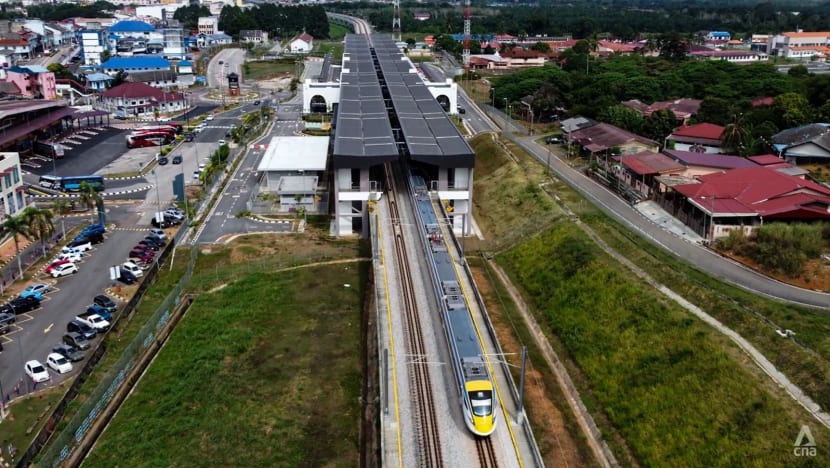
“Four hours is a good journey, because if you take the flight from Changi (Airport) to KLIA, I think overall, together with the first mile, last mile and waiting time and so on, it'll be equivalent to four hours and (with the ETS) you pay only a fraction of the ticket,” added Rosli.
Meanwhile, travellers and transport experts CNA spoke to are bullish that the ETS - once extended to Johor Bahru - will elevate rail commuters’ experience and appeal to locals and foreign tourists, especially those from Singapore.
Additionally, it is also set to boost economies and business of smaller satellite towns such as Kluang along its route.
On the other hand, construction of the line has seen significant delays, and experts have cited how this can erode commuter confidence in the line’s reliability.
Despite its criticisms, KTM’s newly appointed acting chief executive officer Ahmad Nizam Mohamed Amin told CNA in an interview that the ETS could “revolutionise” transport options in the peninsula, as he posited that it represents a greener and potentially cost-effective way to travel between key cities.
KTM said that the journey between Johor Bahru and Kuala Lumpur, for instance, would take between 3.5 and 4.5 hours, depending on the type of ETS service the passenger takes - be it silver, gold, platinum or express - which has different number of stops and varying levels of comfort.
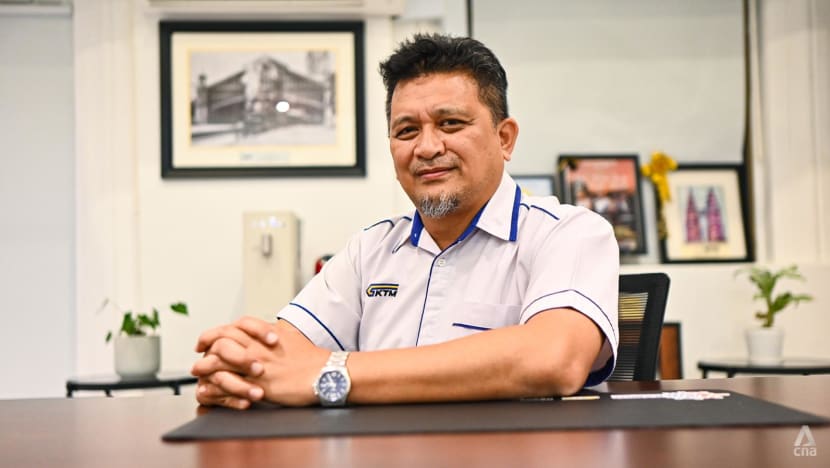
“In terms of cost, it is more economical compared to flying because we save on ticket prices,” said the trained engineer.
“Compared to driving, we save time. Therefore, I believe it is an attractive choice for users to choose to travel by (ETS).
ETS A MAJOR UPGRADE TO DIESEL TRAIN: COMMUTERS
The ETS project is expected to cost RM9.5 billion (US$2.25 billion) and the train is set to travel at a maximum speed of 160km/h. It is also able to make 22 trips a day with 346 seats per train.
Commuters and analysts whom CNA spoke to lauded how the ETS, while not quite on par with the proposed HSR, is a significant upgrade on the KTM commuter train, which runs on diesel.
The latter has a maximum speed of 120kmh.
One such commuter is Ilango Sandaran, a 36-year-old Malaysian who works in Singapore who was boarding the ETS at Segamat recently. He was travelling home to see his wife and two young children who live in Penang.
He had previously commuted via bus or taken a domestic flight from Johor Bahru to Penang, but over the last few months has decided to switch to the ETS as he now sees it as a superior alternative to buses and costs less than flights.
The Segamat ETS began operations in March this year.
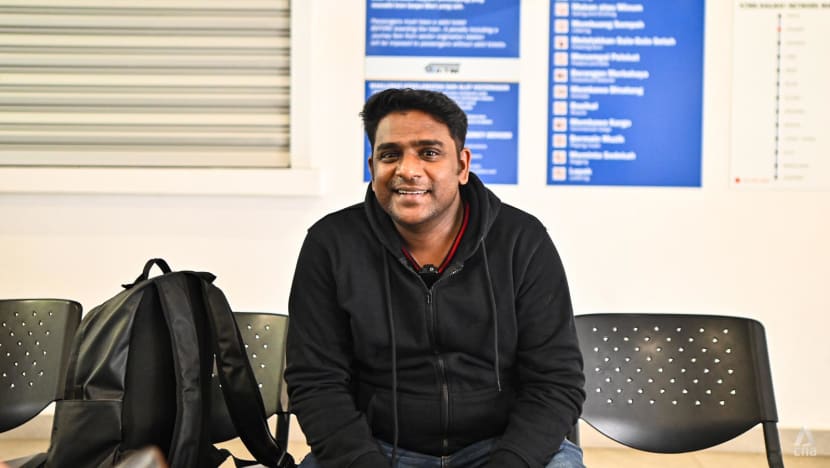
“Passengers can enjoy the scenery and travel without feeling tired. This journey does not save time compared to flying, but it does save money,” said Sandaran, who paid RM90 for a one-way trip from Segamat to Butterworth in Penang.
A one-way flight between Johor Bahru’s Senai International Airport and Penang International Airport in George Town typically costs upwards of RM200, he said.
Sandaran told CNA that the ETS, with its aerodynamic design and “sharp nose”, looked stylish as compared to the diesel commuter train which he said looked “boxy and old”.
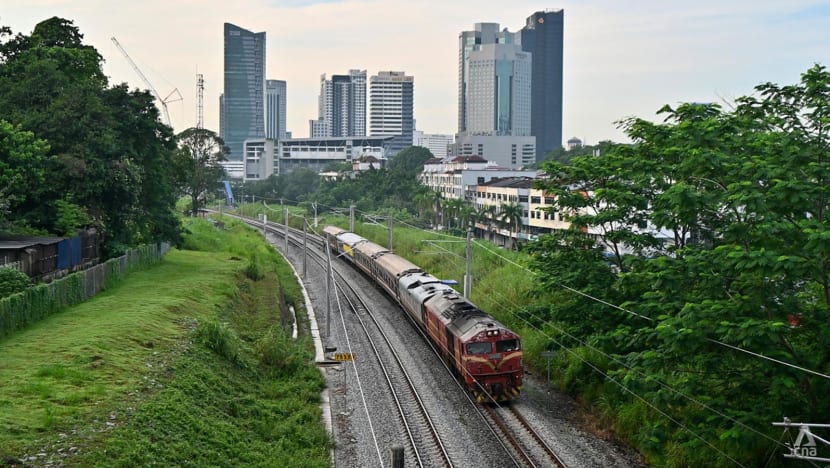
“Inside, the ETS is also spacious with reclining seats and clean air-con. I can just sleep through the entire journey,” he added.
Segamat businesswoman Nazifah Mohd Nor, who runs a food stall near the train station selling snacks, told CNA that the ETS “feels faster and more modern” than the diesel train.
Nazifah previously used the KTM diesel train to commute between Segamat and Kajang for work weekly - a journey that took her around five hours. The same trip by ETS now takes less than three hours.
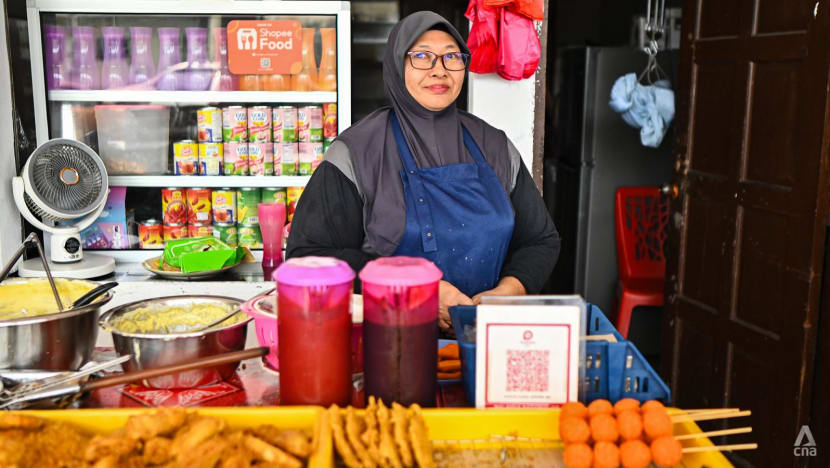
“It saves passengers’ time - time to spend with family or at work. I recall taking those overnight trains to Kuala Lumpur 20 years ago and sometimes they would take even seven-eight hours from Johor Bahru. I don’t think those are practical today,” said the 55-year-old.
Meanwhile, Nor Aziati Abdul Hamid, who is a senior researcher at the Universiti Tun Hussein Onn’s Centre of Excellence for Rail Industry (ICoE-Rail), told CNA that the ETS will boost the economies of smaller satellite towns along the route like Segamat, Taiping and Bukit Mertajam.
“These areas will be linked to ports, logistic hubs and airports so they will be better investment destinations,” said Aziati.
CAN KTM MEET END-2025 DEADLINE?
While there is optimism that the ETS will trigger tangible benefits, there are some concerns over construction delays which have marred the project’s progress.
Experts and commuters whom CNA spoke to said these delays impact the perception of trust towards KTM.
According to local reports, the ETS line was meant to have been completed by 2021, but there have been setbacks relating to electrical supply, land acquisition and pauses in construction during the COVID-19 pandemic.
Earlier this month, The Star reported that the ETS was “not going to be ready anytime soon” after the local daily found during an inspection along the line from Segamat to Johor Bahru that “significant electrification and signalling works remain incomplete”.
There had been previous reports quoting Johor Chief Minister Onn Hafiz Ghazi as saying in March that the extension to Johor Bahru would be completed by September.
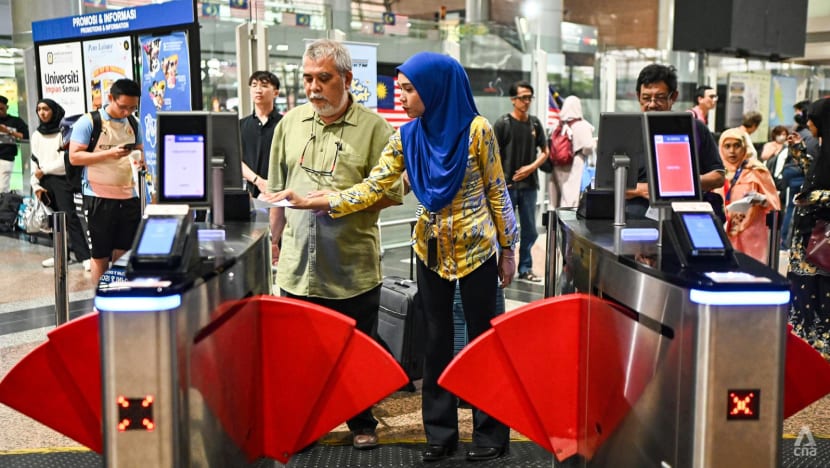
In response to The Star’s report, Transport Minister Loke rebuffed allegations of a delay, outlining how the project was planned to be completed in phases - with the first phase from Gemas to Segamat completing in March and the second phase from Segamat to Kluang to open before Aug 31.
He added that the last phase will be from Kluang to JB Sentral by the end of 2025.
However, transport expert Wan Agyl Wan Hassan, the principal of Agyl & Partners, a consultancy based in Kuala Lumpur, expressed doubts over whether this deadline can be met.
He also called for more transparency from the transport minister and KTM on the purported delays.
“They made an announcement that it might finally be ready by the end of 2025 but even (this) I doubt that. Every time there’s a delay, it shifts the public’s trust,” said Wan Agyl, who also helms the transport think tank My Mobility Vision.
“The real issue, in my opinion, isn't about the delay themselves, but the way the delays have been communicated. Most of the projects (of this scale), we can expect delays, but the public do expect honesty.”
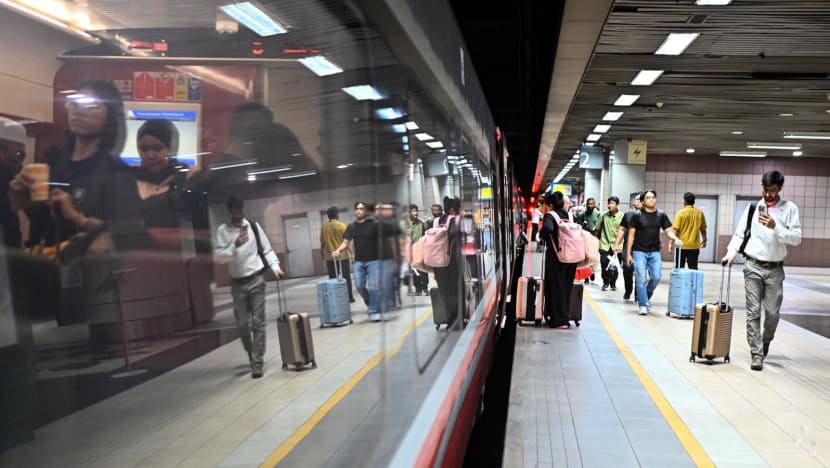
Wan Agyl added that better communication from the government - such as explaining what is causing delays and how the issue is being fixed - would help the public to better understand the situation.
Train commuter Liew Lai Kuan, who takes the rail service from Johor Bahru where he works to his hometown in Taiping, Perak twice a year, told CNA that the construction delays are impacting his journey directly.
The 60-year-old currently takes the KTM commuter train from Johor Bahru to Segamat, a 160km journey that takes three hours, before having to transit in Segamat Railway Station for another three hours. He then boards the ETS for a 3.5-hour journey to Taiping.
Liew also noted that tickets for the entire journey by commuter train only cost around 30 per cent less than the hybrid commuter-ETS journey he undertakes now.

“It's really unnecessary because the journey should be direct from JB to Taiping. I hope it is completed soon, but with these projects … you can’t really trust what’s being reported (on the completion date),” he added.
KTM acting chief Ahmad Nizam maintained that in spite of past delays, the national rail operator is confident that the contractor firm will be able to complete the line extension by the end of 2025.
“We have started operations for … Segamat in March and Kluang we opened on Saturday (Aug 23), and God willing we will fully connect the line to Johor Bahru by the end of the year,” he told CNA.
MDS’ Rosli said that notwithstanding ETS’ delay, the magnitude of the project means that technical inputs and design specifications have to be precise.
“They have been talking about speeding up the construction. But technically, I think there is a need to ensure … the safety of the track, the safe connection to the electrification and testing and commissioning of the train set and so on,” said Rosli.
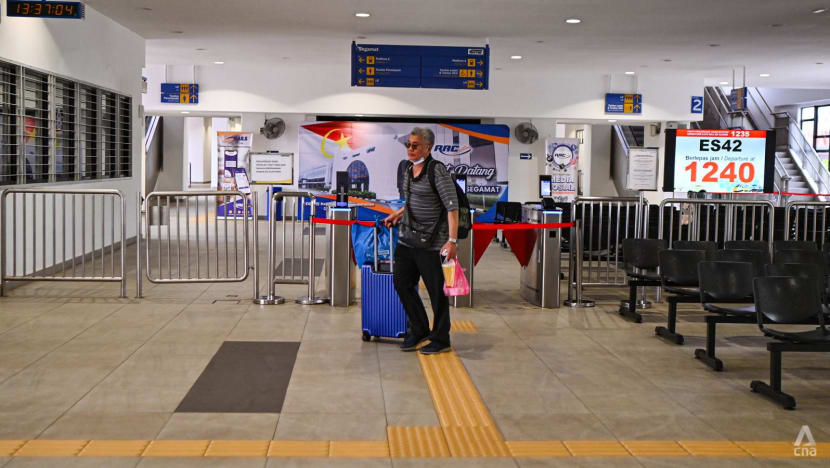
He also cited how the ETS should avoid similar issues that have plagued the KLIA aerotrain - where services have halted multiple times due to technical breakdowns recently. The aerotrain was relaunched in July after more than two years of reconstruction work.
The breakdowns on the KLIA aerotrain recently have been attributed by Loke to a technical glitch involving its software system.
“We have been waiting (for the Aerotrain) for so, so long, and then they try to speed up and so on. And then it ran into problems after it started operating. So hopefully by the time (the ETS) starts operating, it won't break down,” said Rosli.
HOW WILL ETS COMPLEMENT OTHER RAIL PROJECTS?
When the ETS does eventually get up and running, an important factor that could impact the rail service’s viability is how it is integrated with other present and planned rail projects across Malaysia.
For instance, in Penang, the ETS Butterworth station and the Penang Sentral station on the Light Rail Transit (LRT) Mutiara Line are within the same building.
The LRT line in Penang connects travellers to different parts of the state, including Georgetown, Bayan Lepas and Butterworth.
In Johor Bahru specifically, analysts said that it is important that the ETS at JB Sentral is accessible for travellers coming in from Singapore by RTS Link as well as the proposed elevated autonomous rail rapid transit (ART) system.
While the under-construction Bukit Chagar RTS Link station is a short walk away to the current KTM station in JB Sentral, there are no covered or marked walkways linking them.
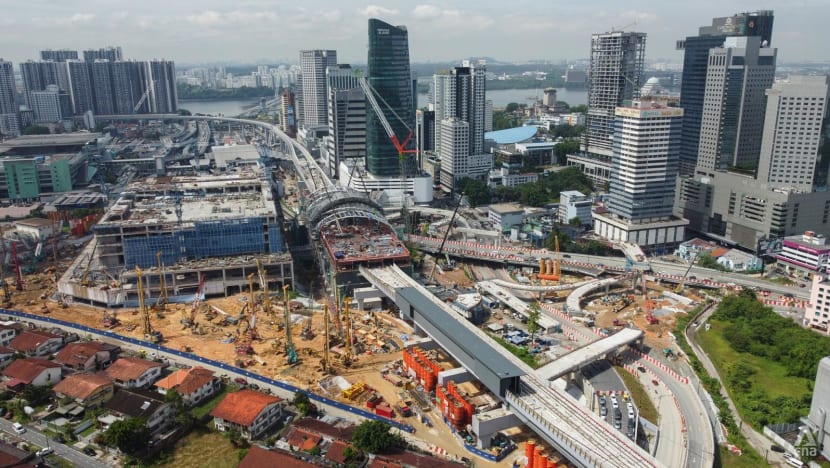
Based on the latest proposal from the Johor state government from 2023, the elevated ART system is likely to pass through JB Sentral but there has been no confirmation on the stations since.
The proposed rail network for the ART would stretch 30km and transport passengers from Johor Bahru city centre to the suburbs via three lines: The Iskandar Puteri, Skudai and Tebrau lines.
ICoE-Rail’s Aziati told CNA that the traffic dispersal system between Bukit Chagar RTS Link station and JB Sentral must be enhanced to ensure a smooth movement of travellers between the different rail systems.
“This is important to assist transiting travellers, if not traffic will get clogged at Johor Bahru city centre,” she said.
To assist with this, KTM acting chief Ahmad Nizam told CNA that travellers from Singapore who want to transfer from the RTS station at Bukit Chagar to the ETS at JB Sentral will be able to use a sheltered walkway with travellators.
“So when the RTS is opened later, the ETS users will be able to connect to the RTS comfortably because they can use a walkway that is comfortable, sheltered and there will even be travellators and lifts for those who are carrying luggages,” he said.
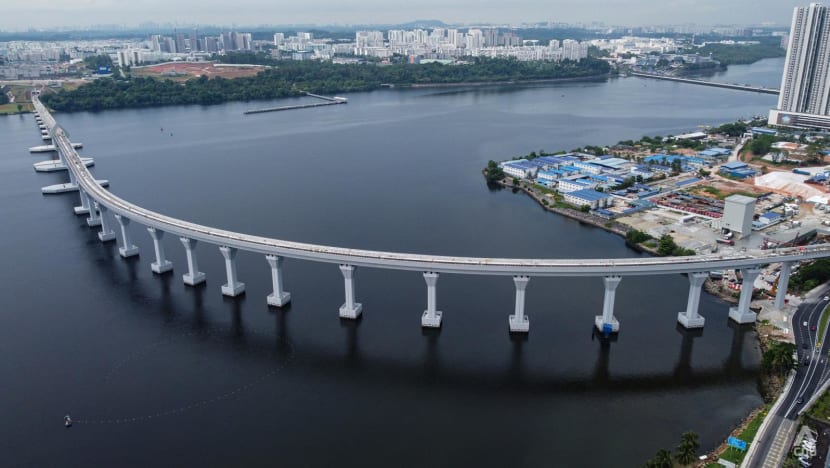
There are also questions on whether the ETS can be a viable substitute or complement the mooted Kuala Lumpur-Singapore HSR project.
The 350km-long HSR project, which can travel up to a speed of 350km/h, was first proposed in 2013 and led to a binding agreement inked in December 2016 with an aim to have the line operational by 2026.
However, it was initially discontinued after multiple postponements at Malaysia's request and an eventual lapsing of an agreement in December 2020.
Malaysia paid more than S$102 million (US$79.5 million) in compensation to Singapore for the terminated project.
Talk of a resurrection gained strength after Malaysia's Prime Minister Anwar Ibrahim took power following the November 2022 general elections.
According to local media reports recently, the HSR is still being deliberated by the Cabinet, with other transport link projects presently regarded as the priority.
A Malaysian government official told CNA on condition of anonymity that the lack of funds remains the biggest obstacle.
The official added that in the meantime, the government is of the view that the ETS is being regarded as a “viable substitute” for travellers who are keen on rail travel between Singapore and Kuala Lumpur.
However, KTM’s Ahmad Nizam said that based on the orientation of the two lines, the ETS runs through largely on the central part of Peninsular Malaysia while the stations based on previous proposals of the HSR were on the west coast.
“So from configuration, there is a choice for passengers depending on their destination and departure,” he said.
However, analysts CNA spoke to stressed that ETS is a vastly inferior alternative to the HSR, pointing out how the former does not connect Kuala Lumpur with key regional economic hub Singapore directly.
They also outlined the difference in service level being offered, given that the HSR offers a 90-minute travel time between Singapore and Kuala Lumpur, as compared to the estimated four hours combining the RTS Link and the ETS.
Wan Agyl told CNA: “The ETS is valuable for that particular corridor, but it is definitely not a substitute (to the HSR). The HSR is built to compete with aviation sectors and stitching Malaysia directly to Singapore and the global economy.”
He stressed that the passenger profile the HSR is targeting are business professionals who typically fly between Singapore and Kuala Lumpur, and it offers travellers a chance to avoid aircraft delays and the hassle of customs clearances at both airports.
Meanwhile, Wan Agyl outlined that the ETS, which estimated construction costs are less than a sixth of the HSR, is a pragmatic service that focuses on domestic mobility.
“It helps Malaysians move from cities to cities at a very affordable and consistent journey,” he said.
























